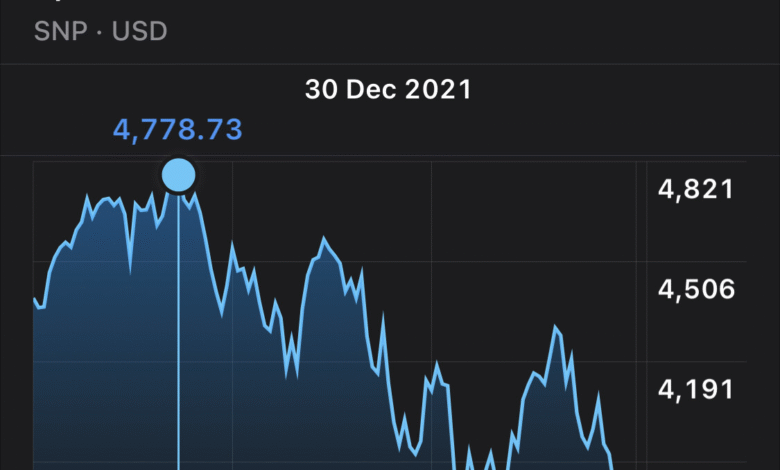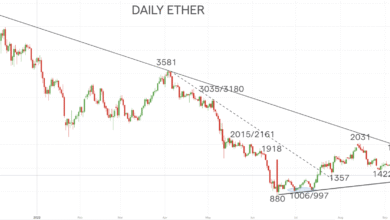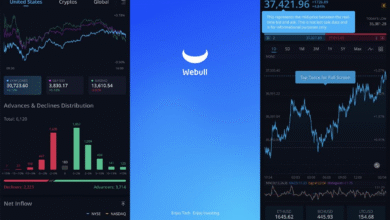Block Shares S&P 500: 10% Surge on Major Inclusion

Block shares S&P 500 are making headlines as the fintech company prepares to make its much-anticipated entry into the prestigious index, replacing Hess on July 23. This development has triggered a remarkable 10% increase in Block’s stock price during extended trading, reflecting the positive stock market reaction to its inclusion. With this transition, Block joins the ranks of other tech giants, further enhancing the S&P 500’s representation of the tech sector’s phenomenal growth in recent years. The buzz surrounding Block company news is palpable, especially following a period of challenges when the company reported disappointing quarterly results and a weak forecast due to a tumultuous macro environment. Investors are closely monitoring this dynamic situation, as Block’s placement in the S&P 500 signifies a pivotal moment in its journey and potentially reinvigorates interest in its financial prospects.
In recent developments, the addition of Block to the prominent S&P 500 index has sparked considerable excitement across the financial community. This change, which sees Block replacing Hess, not only showcases the ongoing evolution of major stock indices but also emphasizes the growing significance of technology firms in the global marketplace. The entry of Block marks a crucial milestone for the company, highlighting its expanding role within the tech sector and its ongoing adaptation to current financial trends. As investors digest this news, discussions surrounding the broader implications of S&P 500 inclusion and the potential for stock price recovery are gaining traction. Ultimately, the inclusion of Block in such a prestigious index may serve as a catalyst for attracting more investment and stabilizing its stock performance moving forward.
Impact of Block’s Inclusion in the S&P 500
The inclusion of Block shares into the S&P 500 marks a significant milestone for the company, reflecting its growth trajectory and the increasing importance of fintech within the U.S. economy. This move not only validates Block’s business model and its performance within the tech sector but also demonstrates the shifting dynamics of the stock market where technology-based enterprises are gaining much higher traction. The decision by S&P Global to include Block highlights the role of innovation in driving economic growth, particularly as traditional industries face headwinds.
Moreover, joining the S&P 500 typically leads to positive stock market reactions. Fund managers are required to adjust their portfolios to include new additions to major indices like the S&P 500, which can create an influx of investment into Block shares. Historically, companies that join such indices have experienced a rapid increase in their stock prices due to heightened visibility and increased demand from institutional investors.
Block Shares Surge: Market Reactions and Future Prospects
Following the announcement of Block transitioning into the S&P 500, shares experienced a remarkable 10% surge. This stock market reaction underscores investor confidence that Block will leverage its newfound status as a member of one of the most prestigious indices. With the technology sector continuously evolving, investors are keenly focused on companies that are not only innovating but also capable of adapting to macroeconomic challenges, and Block fits that profile well despite its recent earnings reports.
Looking ahead, while Block’s shares surged, they remain down 14% year-to-date, indicating a mix of optimism and caution. The broader tech sector has seen remarkable growth, with the Nasdaq gaining over 8% and the S&P 500 itself increasing by 7%. Analysts speculate that if Block can report positive second-quarter results on August 7, it may further solidify its position within the index and restore investor confidence, potentially reversing the downward trend that followed its earlier disappointing forecasts.
Navigating Economic Challenges: Block’s Strategy
Block has acknowledged the challenges posed by the current economic climate, reflecting a cautious approach to its future outlook. The company noted difficulties stemming from various macroeconomic factors, which they believe will affect their performance in the upcoming quarters. Their recent quarterly report cautioned investors about navigating through these turbulent waters, signifying that they were prepared to adapt their strategies as necessary to ensure sustained growth and shareholder value.
Additionally, Block’s diversification into various financial services, including blockchain technologies and cryptocurrency, positions it well for future growth despite current challenges. With a market cap of approximately $45 billion, Block remains a significant player among S&P 500 members. This adaptability demonstrates the company’s commitment to remaining relevant in the rapidly changing tech landscape, which can attract further investment as the market stabilizes.
The Shift Towards Technology in the S&P 500
The S&P 500’s increasing representation of technology firms, including Block, is indicative of a broader trend within the stock market. As traditional industries face various challenges, technology companies are often seen as pillars of growth and innovation. Block’s entry into the index, alongside other tech firms, highlights a strategic alignment within the S&P that reflects changing consumer behaviors and investment priorities, making tech stocks more appealing to investors.
Furthermore, this shift enhances the performance of the index itself, with technology sectors driving significant gains due to their rapid expansion and scalability. Investors are keen to capitalize on this trend, which has been evident in recent stock performance across the technology landscape. As the S&P 500 continues to evolve, the increased inclusion of tech companies like Block suggests that investors could expect continued growth in this sector moving forward.
Analyzing the Role of Fintech in Modern Finance
Block’s evolution from a payment processor to a comprehensive fintech company demonstrates the transformative role of technology in finance. With fintech companies disrupting traditional banking and financial services, Block’s innovative approach highlights the potential for leveraging digital tools to enhance user experiences. Their rapid growth in areas such as cryptocurrency and online lending showcases how fintech is expanding the financial landscape, enticing both new users and investors alike.
As society becomes increasingly inclined towards digital solutions for financial transactions, companies like Block are set to lead the charge. The ability to harness data analytics, blockchain technology, and user-friendly platforms play a pivotal role in their success. Investors are growing more confident about the long-term viability of fintech firms, considering them essential for economic growth, especially during the ongoing digital transformation of the global economy.
Block’s Competitive Landscape Within the Tech Sector
The fintech landscape is evolving rapidly, with numerous competitors vying for market share alongside Block. However, the company’s unique value proposition, which combines payment processing with innovative solutions like cryptocurrency, sets it apart from its peers. The competitive advantage of Block lies in its early adoption of emerging technologies and its ability to pivot in response to market demands.
Furthermore, as Block joins the S&P 500, the stakes grow even higher in ensuring sustained innovation and growth. Competitors such as PayPal and traditional financial institutions are also adjusting their strategies to capture the market’s shifting dynamics. The ongoing competition drives continuous improvement and innovation across the sector, ultimately benefiting consumers who gain access to a broader range of services and technologies.
Future Announcements: Growth Strategy and Insights
As Block prepares to announce its second-quarter results on August 7, investors are eagerly awaiting insights into the company’s growth strategy and overall market performance. Analysts predict that a strong showing could reverse the negative sentiment surrounding its previous earnings report, thus strengthening Block’s standing within the S&P 500. The announcement is crucial as it will provide clarity on how the company is navigating economic challenges and capitalizing on growth opportunities.
Moreover, with the tech sector showing potential for recovery and expansion, strong performance metrics could catalyze further investment in Block shares. Investors will be looking for indications of how Block plans to leverage its S&P 500 inclusion to foster stability and growth. It may also provide hints towards future innovations, partnerships, or expansions that could further enhance its market position in a competitive fintech landscape.
Understanding S&P 500 Inclusion: A Strategic Move for Block
Block’s inclusion in the S&P 500 serves as a strategic move by the company, aiming to enhance its visibility and appeal to a wider investor base. Being part of this prestigious index not only signifies a level of credibility and maturity for Block but also opens doors for institutional investments that often prefer highly rated equities. This inclusion is particularly significant given that many mutual funds and index-tracking investment vehicles primarily focus on S&P 500 constituents.
Additionally, as Block prepares its strategy around the S&P 500 inclusion, it must navigate the expectations that come with being part of an elite group of companies. Investors will be keenly watching for how Block manages its resources and optimizes its operations to deliver on performance expectations. Such strategic planning is crucial for securing long-term growth and sustainability, especially in a rapidly changing market landscape.
Block’s Journey in the Financial Landscape: From Square to Blockchain Innovator
Block’s journey from being recognized as ‘Square’ to its current identity underscores a compelling narrative of adaptation and innovation in the financial services sector. Originally garnering attention for its payment processing solutions, the company has successfully ventured into other domains, including lending and cryptocurrency, showcasing its ability to evolve amidst changing market conditions. This rebranding to Block was strategic, aligning with its emphasis on blockchain technologies, which are pivotal in modern finance.
As a pioneer in the fintech space, Block’s evolution reflects the overarching trends within the stock market and investor sentiment towards tech-oriented companies. Such a transformation not only solidifies its place in the S&P 500 but also highlights its alignment with current economic necessities for innovative financial solutions. By continuing to innovate, Block can solidify its position as a leader within its industry, appealing to growth-focused investors.
Frequently Asked Questions
What does Block shares’ inclusion in the S&P 500 mean for investors?
Block shares’ entry into the S&P 500 typically signals increased visibility and demand from institutional investors, as funds need to adjust their holdings to reflect this significant index change. This can lead to a positive stock market reaction and potentially boost Block’s share price further.
How have Block shares performed leading up to their S&P 500 inclusion?
Leading up to their S&P 500 inclusion, Block shares experienced a notable surge of over 10%, though they remain down 14% year-to-date. This fluctuation reflects a mix of investor optimism from the index change and broader concerns about the company’s recent quarterly performance.
What factors influenced Block shares before their S&P 500 addition?
Block shares were influenced by disappointing quarterly results and a weak forecast due to challenges in the macroeconomic environment. These concerns contributed to price volatility but ultimately did not prevent their impending inclusion in the S&P 500.
What is the significance of Block shares replacing Hess in the S&P 500?
Block replacing Hess in the S&P 500 indicates a shift towards more technology-focused representation within the index. This change emphasizes the growing market value of tech companies, mirroring broader trends in the stock market.
Why do stocks typically rally after being added to the S&P 500, such as Block shares?
Stocks like Block typically rally after S&P 500 inclusion because institutional investors must rebalance their portfolios to include the newly added company, driving demand and often increasing share prices.
How does Block’s market cap compare to the average in the S&P 500?
With a market cap of approximately $45 billion, Block’s valuation is significantly above the median market cap of companies within the S&P 500, indicating a strong position relative to its peers in the index.
What role does macroeconomic environment play in Block shares’ performance?
The macroeconomic environment plays a critical role in Block shares’ performance, as fluctuating tariffs and economic forecasts can affect investor sentiment and company guidance, ultimately shaping stock price movements.
What industries does Block represent within the S&P 500?
Block primarily represents the fintech sector within the S&P 500, contributing to the index’s growing emphasis on technology and financial innovation.
When will Block officially begin trading in the S&P 500?
Block is set to officially begin trading in the S&P 500 on July 23, as per the announcement by S&P Global.
How does the S&P 500 inclusion reflect on Block’s overall growth strategy?
Block’s inclusion in the S&P 500 reflects its growth trajectory and strategic emphasis on expanding into fintech, blockchain technologies, and diversifying its financial service offerings.
| Key Point | Details |
|---|---|
| Block shares soar 10% | Block shares increased by more than 10% following the announcement of their inclusion in the S&P 500. |
| Joining the S&P 500 | Block will officially join the S&P 500 on July 23, replacing Hess. |
| Hess’s Exit | Hess is leaving the index due to its acquisition by Chevron. |
| Market Reactions and Changes | Stocks often rally when added to major indices; Block’s inclusion highlights increased tech representation. |
| Block’s Company Profile | Founded by Jack Dorsey in 2009, originally known as Square, focusing on payment services and now blockchain technology. |
| Current Market Performance | Block shares are down 14% year-to-date but have a market cap of approximately $45 billion. |
| Upcoming Earnings Report | Block will announce its second-quarter results on August 7. |
Summary
Block shares S&P 500 highlights the company’s significant achievement as it prepares to join the prestigious index, replacing Hess. Despite a recent surge in stock price following the announcement, Block must address concerns regarding its financial performance amid a challenging economic environment. Investors and analysts alike will be watching closely for its upcoming earnings report on August 7, which could further influence its market standing within the S&P 500.




